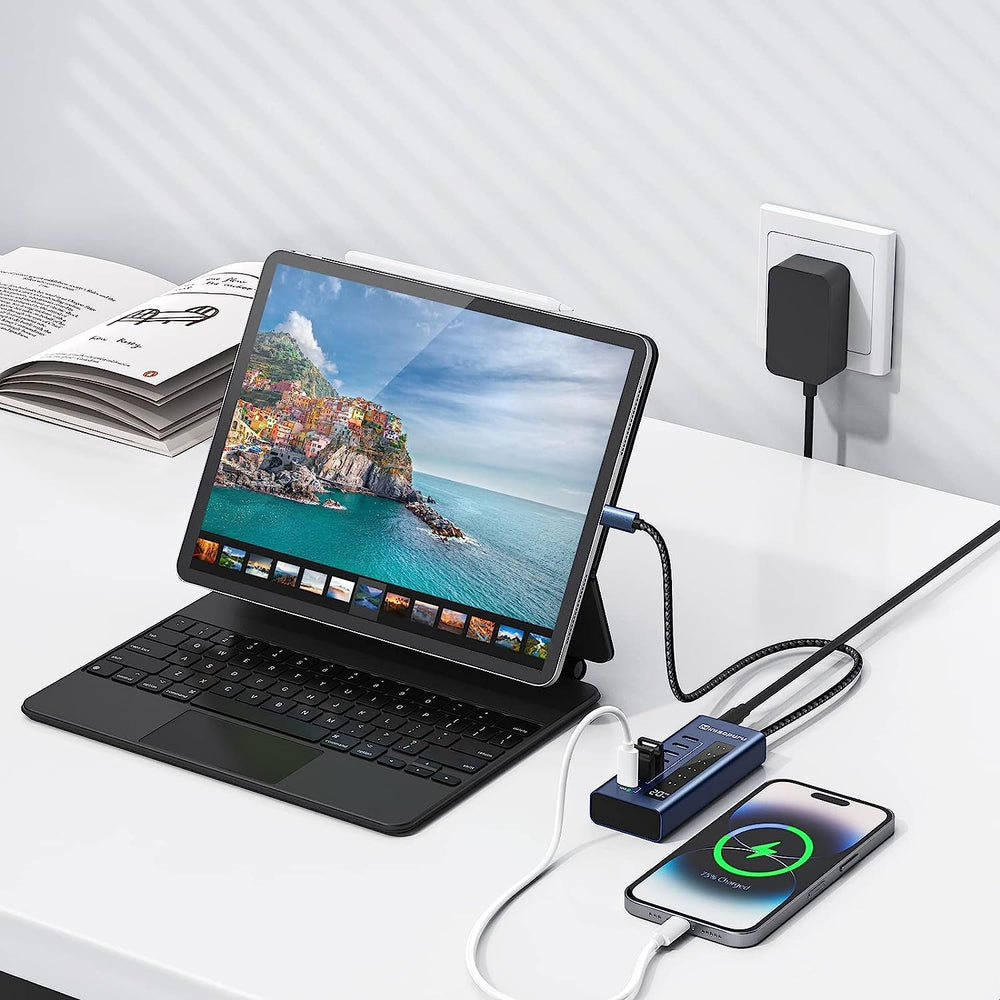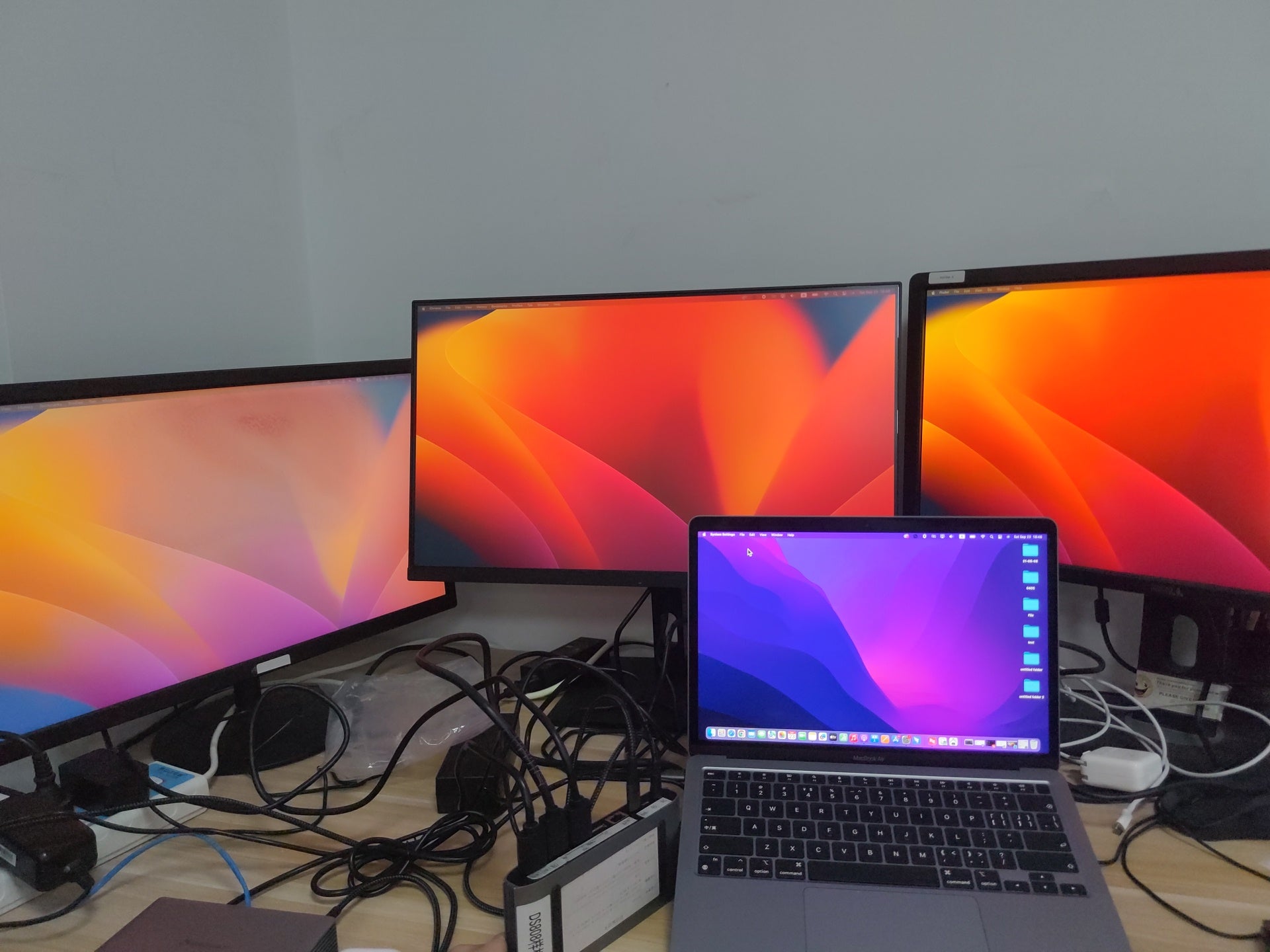If you notice that one or more of your DisplayLink-connected screens are intermittently going blank for approximately one second before coming back on, and the windows on the DisplayLink display have not been displaced to another display, it is likely due to the monitor losing synchronization with the video output from the DisplayLink video output. This issue may arise from prolonged usage of subpar-quality video cables. It is important to note that video cables are no different from any other cable in terms of quality. The use of poor-quality cables may result in signal degradation, video flicker, and video distortion.
Interestingly, we have observed that this issue can also be associated with gas lift office chairs. When individuals sit or stand on gas lift chairs, they may generate an EMI (electromagnetic interference) spike, which can be picked up on the video cables, leading to a loss of synchronization. If you receive feedback from users regarding random display flickering, it may be linked to people using gas lift chairs. Once again, swapping the video cables, especially those with magnetic ferrite rings on the cable, can resolve this issue. In fact, there is even a white paper available on this subject matter.
The issues mentioned above are especially noticeable in video cable converters.
In the event that you are experiencing issues while using a DisplayPort to HDMI, DisplayPort to DVI, DisplayPort to VGA, or HDMI to VGA cable, we suggest utilizing an active video adapter in conjunction with a video cable, as outlined below:
DisplayPort output > DisplayPort to HDMI active adapter > HDMI to HDMI cable > Monitor input
DisplayPort output > DisplayPort to DVI active adapter > DVI to DVI cable > Monitor input
DisplayPort output > DisplayPort to VGA active adapter > VGA to VGA cable > Monitor input
HDMI output > HDMI to VGA active adapter > VGA to VGA cable > Monitor input
What distinguishes active cables and adapters from passive ones?
Active cables and adapters have an in-built chip that enables them to convert the video signal from one format to another, such as from DisplayPort to HDMI. Additionally, they are capable of converting digital DisplayPort or HDMI signals to analog VGA signals.
Which active adapters do you suggest?
While we cannot endorse one over the other, we frequently employ the following active adapters in our testing laboratory:
DisplayPort to HDMI adapter:
DisplayPort to DVI
DisplayPort to VGA
HDMI to VGA
Please note:
Take into consideration that DisplayPort adapters will only function properly when the DisplayPort is connected to the source output, rather than the input on a monitor.
Likewise, HDMI to VGA adapters will only work as intended when the HDMI is connected to the source output, rather than the input on a monitor.
Interestingly, we have observed that this issue can also be associated with gas lift office chairs. When individuals sit or stand on gas lift chairs, they may generate an EMI (electromagnetic interference) spike, which can be picked up on the video cables, leading to a loss of synchronization. If you receive feedback from users regarding random display flickering, it may be linked to people using gas lift chairs. Once again, swapping the video cables, especially those with magnetic ferrite rings on the cable, can resolve this issue. In fact, there is even a white paper available on this subject matter.
The issues mentioned above are especially noticeable in video cable converters.
In the event that you are experiencing issues while using a DisplayPort to HDMI, DisplayPort to DVI, DisplayPort to VGA, or HDMI to VGA cable, we suggest utilizing an active video adapter in conjunction with a video cable, as outlined below:
DisplayPort output > DisplayPort to HDMI active adapter > HDMI to HDMI cable > Monitor input
DisplayPort output > DisplayPort to DVI active adapter > DVI to DVI cable > Monitor input
DisplayPort output > DisplayPort to VGA active adapter > VGA to VGA cable > Monitor input
HDMI output > HDMI to VGA active adapter > VGA to VGA cable > Monitor input
What distinguishes active cables and adapters from passive ones?
Active cables and adapters have an in-built chip that enables them to convert the video signal from one format to another, such as from DisplayPort to HDMI. Additionally, they are capable of converting digital DisplayPort or HDMI signals to analog VGA signals.
Which active adapters do you suggest?
While we cannot endorse one over the other, we frequently employ the following active adapters in our testing laboratory:
DisplayPort to HDMI adapter:
DisplayPort to DVI
DisplayPort to VGA
HDMI to VGA
Please note:
Take into consideration that DisplayPort adapters will only function properly when the DisplayPort is connected to the source output, rather than the input on a monitor.
Likewise, HDMI to VGA adapters will only work as intended when the HDMI is connected to the source output, rather than the input on a monitor.


